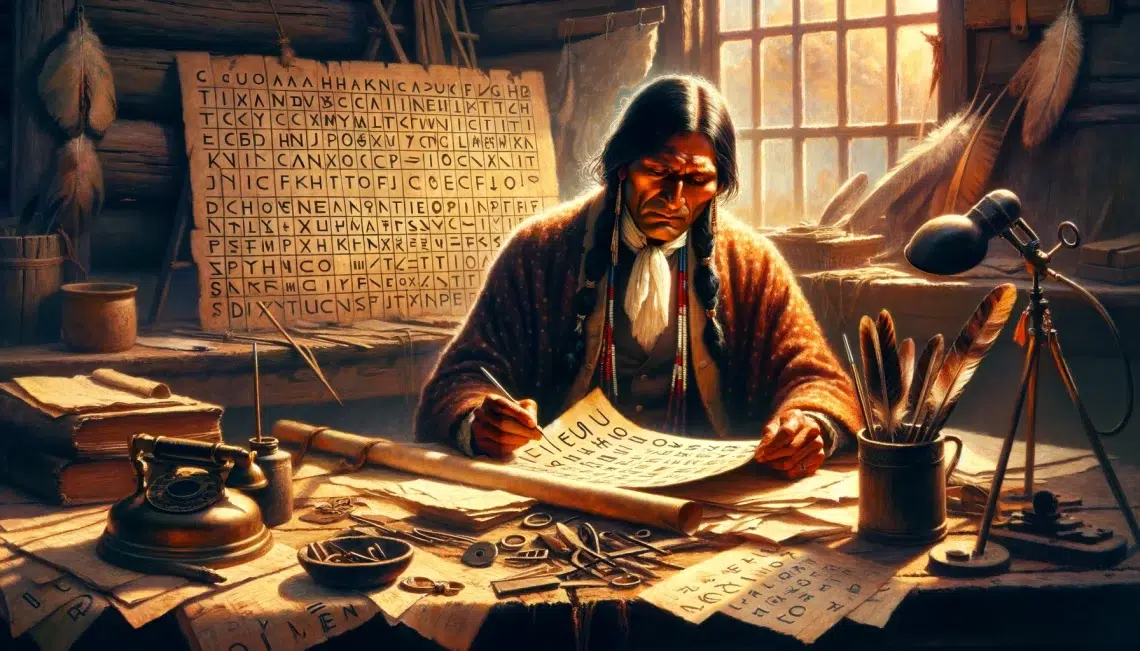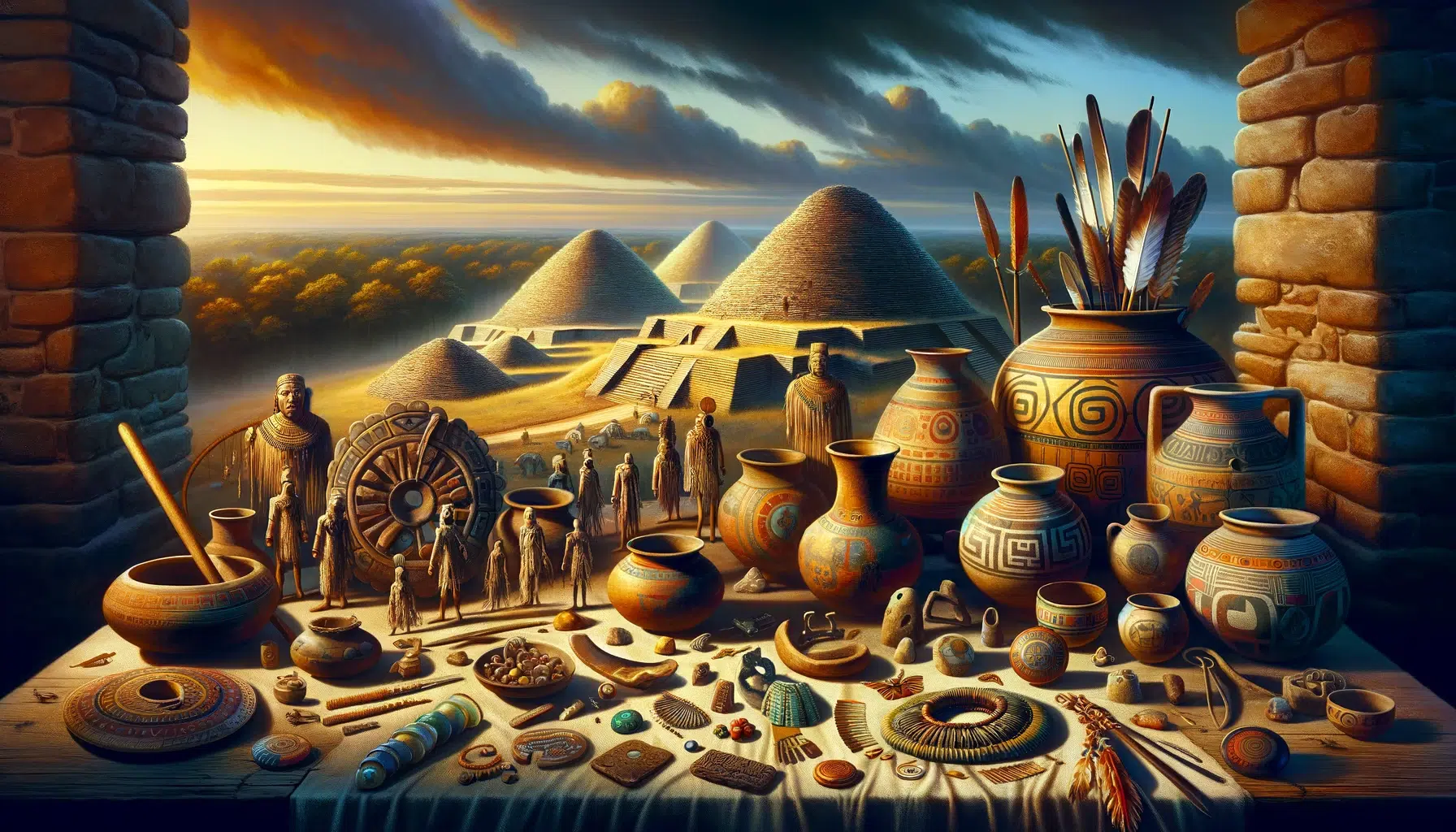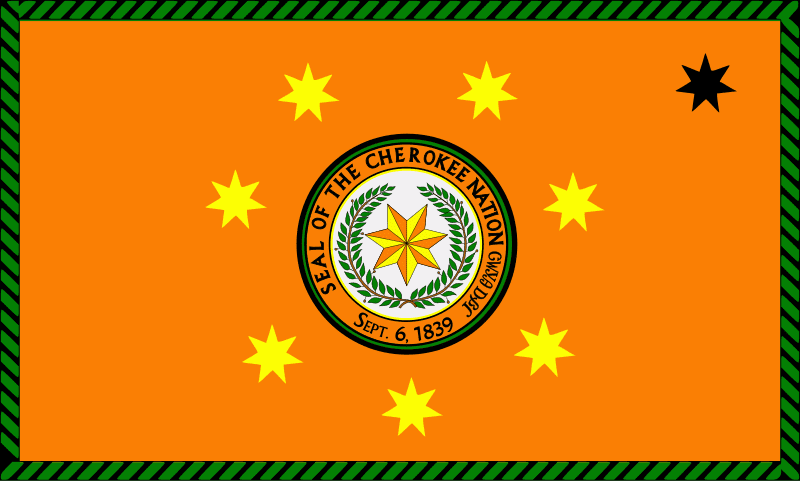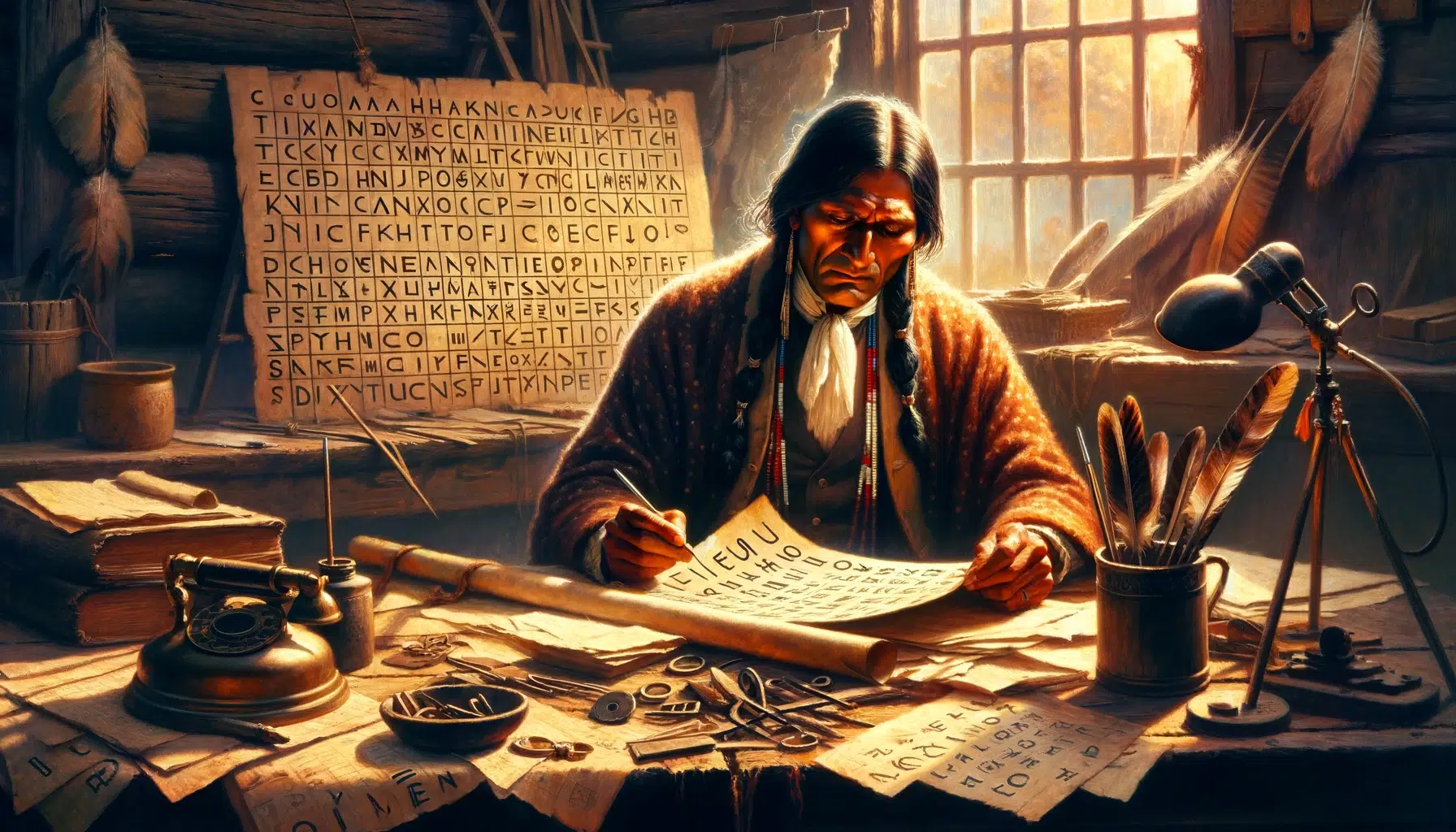
Understanding Cherokee Symbols and Meanings
Cherokee symbols hold deep cultural significance within Native American history.
While there is some debate and disagreement among scholars and Native communities about the exact meanings of these symbols, their impact cannot be denied.
The Cherokee Four Directions symbol, with its soothing swirl and interwoven lines, is one of the most recognizable Cherokee symbols.
Let’s explore their significance in different aspects of Cherokee culture, art, spirituality, and popular culture.
Key Takeaways:
- Cherokee symbols carry deep cultural significance within Native American history.
- These symbols represent concepts such as balance, stages of life, cardinal directions, seasons, and the numbers four and seven.
- The Cherokee Four Directions symbol is one of the most recognizable Cherokee symbols.
- Cherokee symbols can be found in various forms of art, artifacts, and popular culture.
- The Cherokee syllabary, a written language developed by the Cherokee people, played a crucial role in preserving their language and cultural heritage.
Introduction to the Cherokee Nation
The Cherokee Nation is the largest of three Cherokee peoples recognized by the U.S. government.
It plays a big role in Native American history and life today.
Originally, the Cherokee lived in a large area of the southeastern United States, covering parts of what are now Georgia, Tennessee, North Carolina, South Carolina, and Alabama.
But in the 1830s, many were forced to move to what is now northeastern Oklahoma during the Trail of Tears.
Now, the Cherokee Nation’s headquarters is in Tahlequah, Oklahoma.
This city is the capital of the Cherokee Nation and a key cultural and political hub for the people.
The Cherokee Nation covers more than 7,000 square miles in northeastern Oklahoma, including parts of 14 counties.
The Cherokee Nation has its own government with three parts: executive, legislative, and judicial.
It makes its own laws, holds elections, and has officials like the Principal Chief.
The nation runs businesses and public services that help its people and the larger community.
These include healthcare, education, and programs to keep Cherokee culture alive.
The Cherokee Nation also works hard to keep Cherokee culture, language, and history alive, ensuring that the Cherokee legacy continues for future generations.
Importance of Symbols in Cherokee Culture

Symbols are very important in Cherokee culture.
They help tell stories, express religious beliefs, and show what it means to be Cherokee.
These symbols are like a language that shares wisdom and traditions without using words.
In storytelling, symbols bring the tales to life.
They help explain the lessons and values that are important to the Cherokee people.
For example, the symbol of a bear might represent strength and courage in a story about overcoming challenges.
In religion, symbols connect the Cherokee to the spiritual world.
They are used in ceremonies to communicate with spirits and honour the earth.
For example, the circle, often seen in Cherokee rituals, represents the cycle of life and the universe.
Symbols also help Cherokees express their identity.
They wear and use these symbols to show they are part of a larger community that shares the same values and history.
This helps them keep a strong sense of who they are and where they come from.
Overall, symbols are a key part of life for the Cherokee.
They weave together storytelling, religion, and identity, helping to keep Cherokee culture strong and vibrant.
The Importance of Seven in Cherokee Life
The Cherokee people deeply value the numbers four and seven, which hold great significance in their life and mythology.
These numbers are integral to understanding Cherokee symbols and their cultural beliefs.
The Seven Cherokee Clans
The Cherokee recognize seven clans, each representing a different animal or natural element.
- Bird (Ani-Tsisqua) associated with messengers and spiritual connection
- Deer (Ani-Kawi) represents gentleness, peace, and agility
- Wolf (Ani-Waya) were the largest and most important warrior clan, symbolizing loyalty and protection
- Wild Potato (Ani-Gatogewi) traditionally gathered wild potatoes, considered caretakers of the land
- Blue (Ani-Sahoni) was known for their knowledge of medicine and healing practices
- Paint (Ani-Wodi) were known for medicine, war paint, and spiritual leadership
- Long Hair (Ani-Gilohi) were known for their elegant appearance and diplomacy
Each clan has a unique role and set of traits that contribute to the overall Cherokee community, helping to maintain balance and harmony within the people.
The number seven is considered pure and sacred, symbolizing the connection between the Seven Generations that came before and the Seven Generations yet to come.
The Seven-Pointed Star
The Seven-Pointed Star is a significant symbol for the Cherokee.
It stands for the seven clans of the Cherokee people.
Each point on the star represents one clan and its unique values and roles within their people.
These clans include Bird, Deer, Wolf, Long Hair, Wild Potato, Blue, and Paint.
The star reminds the Cherokee of their duties to each other and their community.
It is often used in decorations and art to honour their ancestral structure and guidance.
The Significance of Four in Cherokee Culture
Symbolic Representations
The Four Directions symbol in Cherokee culture carries multiple symbolic representations:
- Cardinal Directions:
- It represents the four cardinal directions: North, South, East, and West.
- Each direction holds its own significance and represents a different aspect of life and the natural world.
- The Earth is believed to be held together by four cords, each representing one of these directions.
- Stages of Life:
- This represents the stages of life – childhood, adolescence, adulthood, and elderhood.
- It signifies the continuous cycle of growth and change.
- Seasons of the Year:
- This signifies the 4 seasons of the year – spring, summer, autumn, and winter.
- It reflects the cyclical nature of nature and the ever-changing world we inhabit.
This symbol is deeply intertwined with the connection between the Cherokee people and the surrounding environment, as well as their beliefs in balance and harmony.
The flowing lines within the symbol resemble water, which is held in high regard within Southeast Indigenous communities.
The emphasis on the recurring number four symbolizes balance and harmony in Cherokee beliefs.
Cherokee Four Directions Symbol
| Symbol | Meaning |
|---|---|
| North | Represents wisdom and contemplation. |
| South | Symbolizes innocence, growth, and trust. |
| East | Signifies new beginnings and the dawning of a new day. |
| West | Represents reflection, introspection, and the setting sun. |
The Three Sisters – Cherokee Symbols and Their Meanings

Corn, Beans, and Squash (The Three Sisters)
In Cherokee culture, people call corn, beans, and squash the Three Sisters.
The Cherokee traditionally grow and eat these main crops.
They plant, grow, and support each other together.
Corn provides a stalk for the beans to climb. Beans fix nitrogen in the soil, which helps corn grow.
Squash covers the ground, keeping it moist and weed-free.
Together, they symbolize the Cherokee’s connection to agriculture, sustainability, and health. These plants teach the importance of working together and supporting one another.
The Fire
Fire holds a special place in Cherokee tradition.
It symbolizes the hearth and the heart of both family and community life.
The fire is a gathering place, a spot for cooking and sharing stories, and a sacred space for ceremonies.
In many rituals, a sacred fire is lit to represent the warmth and light that guide the community.
It brings people together, reminding them of their connection to each other and the spiritual world. Fire’s warmth and light are seen as essential for life and growth.
Cherokee Symbol and Art Integration
Cherokee art beautifully integrates symbols that have deep meanings.
These symbols appear in various forms of traditional and contemporary Cherokee art.
Artists use them in pottery, basket weaving, and beadwork to tell stories and express cultural values.
For example, pottery might feature the circle symbol, representing unity and the cycle of life.
Basket weaving is another important art form where symbols play a big role.
Weavers use designs like the Seven-Pointed Star to honour Cherokee clans and their values.
Each pattern is not just for beauty but also tells a part of Cherokee history and beliefs.
Beadwork often includes symbols like the eagle feather, which stands for strength and honesty.
Wearing such beadwork is a way for Cherokee people to show pride in their heritage and connect with their community’s values.
Through these art forms, Cherokee symbols help keep the culture alive and strong.
They teach both the Cherokee and others about the people’s traditions and way of life.
The Artistry and Significance of Cherokee Symbols
The artistry and symbolism of Cherokee symbols continue to captivate and inspire artists, historians, and enthusiasts throughout the world.
The intricate details infused in each symbol reflect the deep connection that the Cherokee people have with nature and the spiritual realm.
Through their artistic expressions, the Cherokee showcased their understanding of the world, their beliefs, and their values, leaving behind a powerful visual legacy.
- Lines: The use of lines in Cherokee symbols represents connection and interdependence. Whether it’s the interwoven lines of the Four Directions symbol or the flowing lines reminiscent of water, each stroke holds profound meaning.
- Swirls: Swirls found in Cherokee symbols symbolize the cyclical nature of life and the eternal flow of energy. They represent the continuous cycle of nature, the changing seasons, and the stages of life.
- Knots: Knots in Cherokee symbols have a dual purpose. They not only signify the complexity of life but also represent the unbreakable bonds between individuals, families, and communities.
Cherokee Artifacts

Cherokee symbols are not only preserved in oral traditions but also within various forms of art and artifacts.
The intricate designs of these symbols often incorporate lines, swirls, and knots, showcasing the artistic talent of the Cherokee people.
One fascinating aspect of Cherokee symbols in art is their connection to the Mississippian Mound cultures.
These ancient civilizations, which thrived from approximately 800 to 1500 CE, left behind a treasure trove of artifacts that bear these symbolic designs.
These artifacts provide a tangible link to the past, enabling us to delve into the rich history and cultural heritage of the Cherokee people.
They also serve as a testament to the profound reverence the Cherokee held for their traditions and beliefs.
The artistry and symbolism of these Cherokee symbols continue to be celebrated, allowing us to appreciate the profound wisdom, creativity, and spiritual connection embedded within each design.
By exploring and understanding Cherokee symbols in art and artifacts, we gain a deeper appreciation for the cultural heritage and significance of the Cherokee people.
Cherokee Symbols and Nature
The Cherokee people have a deep spiritual connection to nature, reflected in their symbols and beliefs. Many animals and natural elements hold significant meanings, representing life, spirituality, and guidance.
- Owl – The owl is associated with the spirit world and is considered a messenger in Cherokee traditions. Some believe it carries medicine and warnings. Its ability to navigate darkness symbolizes wisdom, intuition, and protection in uncertain times.
- Bear – The bear represents courage, strength, and resilience. It is a protector and guardian, reminding the Cherokee to stand strong in adversity.
- Eagle – The eagle holds deep spiritual significance, symbolizing strength, wisdom, and vision. It represents the connection between earth and the Creator, and its soaring flight inspires the Cherokee to pursue their highest potential.
The Eagle Feather
The eagle feather is among the most sacred symbols in Cherokee culture. It represents honesty, truth, respect, strength, courage, wisdom, and freedom. Since eagles fly high and see widely, they are thought to be close to the Creator.
Cherokee people use eagle feathers in sacred ceremonies as a means of spiritual communication.
Receiving an eagle feather is a great honour, often recognizing bravery, leadership, or service to the community.
Cherokee symbols in nature serve as reminders of the interconnectedness between humans and the natural world.
These symbols encompass the belief that everything in nature has a spiritual essence and should be respected and cherished.
The Cherokee people strive to maintain a harmonious relationship with nature. Their well-being has a connection to the well-being of the earth and its creatures.
Historical Significance of the Cherokee Flag
Cherokee symbols hold a deep historical significance, particularly in relation to the Trail of Tears.
The Trail of Tears refers to the forced relocation of the Cherokee people from their ancestral lands in the southeastern states to Oklahoma in 1838.
This tragic event, ordered by the United States government, resulted in the displacement and suffering of thousands of Cherokee individuals and families.
Cherokee Flag Symbolism

One powerful symbol associated with the Trail of Tears is the Cherokee flag.
The flag features a seven-pointed star, which represents the seven clans of the Cherokee people.
This symbolizes the unity and strength of the Cherokee community, even in the face of immense adversity.
The flag also includes garlands of leaves, which symbolize the sacred fire traditionally maintained by Cherokee spiritual leaders.
A black star is in the corner of the flag. This is a somber reminder of the thousands of Cherokee people who did not survive during the forced relocation.
These symbols serve as enduring reminders of the resilience, strength, and history of the Cherokee people.
They represent the deep connection between the Cherokee people and their ancestral lands, as well as the hardships they faced during this dark chapter of Cherokee history.
| Symbol | Meaning |
|---|---|
| Seven-Pointed Star | Represents the seven clans of the Cherokee people |
| Garlands of Leaves | Symbolize the sacred fire maintained by Cherokee spiritual leaders |
| Black Star | Honours the thousands of Cherokee people who died during the Trail of Tears |
The Cherokee symbols present on the flag reflect the resilience and enduring spirit of the Cherokee people.
Despite the hardships faced during the forced relocation, the Cherokee culture and heritage continue to thrive, bolstered by the symbolic reminders of their history.
The Cherokee Syllabary and Written Language

A Cherokee man named Sequoyah created the Cherokee syllabary in the early 1820s, providing a written system for the Cherokee language.
Before this, Cherokee was only spoken and had no writing system. Sequoyah, inspired by English writing and communication, wanted his people to have a way to record their language. He spent over a decade developing 86 symbols, each representing a syllable rather than individual letters like in alphabetic systems.
This syllabary allowed the Cherokee to write stories, laws, and personal thoughts. It was so effective that within just a few years, thousands of Cherokee became literate.
In 1828, they launched The Cherokee Phoenix, the first newspaper published in both Cherokee and English.
The Cherokee syllabary played a crucial role in preserving their language and cultural identity.
Today, it remains in use, taught in schools, and used in daily communication. Its continued use highlights the resilience of Cherokee traditions and how one person’s invention can shape a community’s future.
Resources for learning more about Cherokee symbols and culture
- Cherokee Language Lessons – This platform provides comprehensive lessons, audio recordings, and exercises for learning the Cherokee syllabary and understanding symbols.
- Cherokee Nation – Engage with local Cherokee communities and cultural organizations for immersive experiences and educational programs. These communities often offer educational programs, workshops, and cultural events that provide immersive experiences to further enrich one’s understanding and appreciation of Cherokee culture.
- Cherokee Preservation Foundation – A central organization dedicated to preserving Cherokee language, culture, and symbols through grants and initiatives.
Conclusion
Cherokee symbols hold deep cultural significance within Native American history, representing concepts such as balance, seasons, and stages of life.
These symbols reflect the close bond between the Cherokee people and the natural world.
By understanding and appreciating Cherokee symbols, we gain insight into the rich history and heritage of the Cherokee people and Native American culture as a whole.
Their exact meanings may vary, as there is some debate among scholars and Native communities.
They serve as important elements, preserving and honouring Cherokee traditions across generations.
Cherokee symbols appear in many art forms and artifacts, highlighting the cherished artistry and symbolism of the people.
They also weave into popular culture, appearing on street signs and tattoos, reminding us of Cherokee heritage.
Learning and preserving Cherokee symbols is a way to foster a deeper appreciation for Cherokee culture and ensure its continued existence.
By passing on the knowledge of these symbols, we contribute to the cultural preservation of Native American heritage.
Cherokee symbols truly embody the cultural significance and rich legacy of the Cherokee people.






